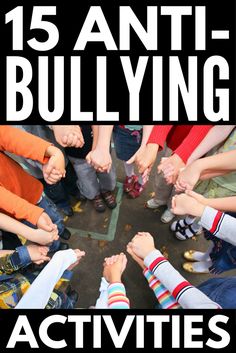Introduction:
Bullying has become a pressing issue in today’s society that affects children, teenagers, and adults alike. The consequences are far-reaching, with potential long-term impacts on the mental and emotional health of individuals who have been victimized. This article aims to highlight the nature of bullying, its effects on victims and perpetrators, and present viable solutions that can be implemented to tackle this problem.
Defining Bullying:
Bullying is a repetitive, intentional act that involves an imbalance of power between the perpetrator and the victim. It takes on various forms, including physical aggression, verbal abuse, social exclusion, and cyberbullying. In some cases, bullying can lead to severe psychological trauma for its victims.
Effects on Victims:
Victims of bullying often suffer from a range of psychological issues such as low self-esteem, depression, anxiety, and suicidal thoughts. They might also develop physical symptoms like headaches or gastrointestinal issues due to chronic stress. Additionally, those who are bullied may experience difficulty in forming relationships or trusting others in social settings. These effects often manifest years after the harassment took place.
Effects on Perpetrators:
The impact of bullying is not limited to its victims; perpetrators too face consequences as a result of their actions. They are more likely to engage in antisocial behavior later in life, struggle with substance abuse and even have legal troubles. It is crucial to understand that bullies often require guidance to break free from these destructive patterns.
Prevention Strategies:
There are various approaches that can be employed to tackle the issue of bullying:
1. Education: Schools must implement comprehensive anti-bullying programs that promote empathy, communication skills, and conflict resolution among students. Parents must also be educated about recognizing and addressing signs of bullying.
2. Parental Involvement: Parents should maintain open communication with their children regarding their school life and social interactions. Encouraging healthy dialogue at home can help children feel safe to speak up about their experiences.
3. Reporting Mechanisms: Schools and institutions must establish clear reporting procedures to deal with cases of bullying, ensuring both parties involved receive appropriate guidance and support.
4. Online Safety: In the age of social media, cyberbullying has gained prominence. Parents and educators must emphasize the importance of responsible online behavior and internet safety measures for children.
5. Community Support: Collaboration between schools, local organizations, and communities can empower people to work together in creating a safe environment that promotes respect and inclusion.
Conclusion:
Bullying is a pervasive issue that affects individuals from all walks of life. Understanding its complex nature emphasizes the need for prompt action from schools, parents, communities, and governments. By fostering empathy, understanding, and promoting proactive measures to address incidents of bullying, we can create an environment where everyone feels included and valued.
References (Include at least 3 sources):
1. National Bullying Prevention Center (2018). Bullying Statistics & Information.
2. Olweus, D., & Limber, S. (2018). Bullying: A Primer.
3. Hinduja, S., & Patchin, J.W. (2017). Cyberbullying Research Summary.











